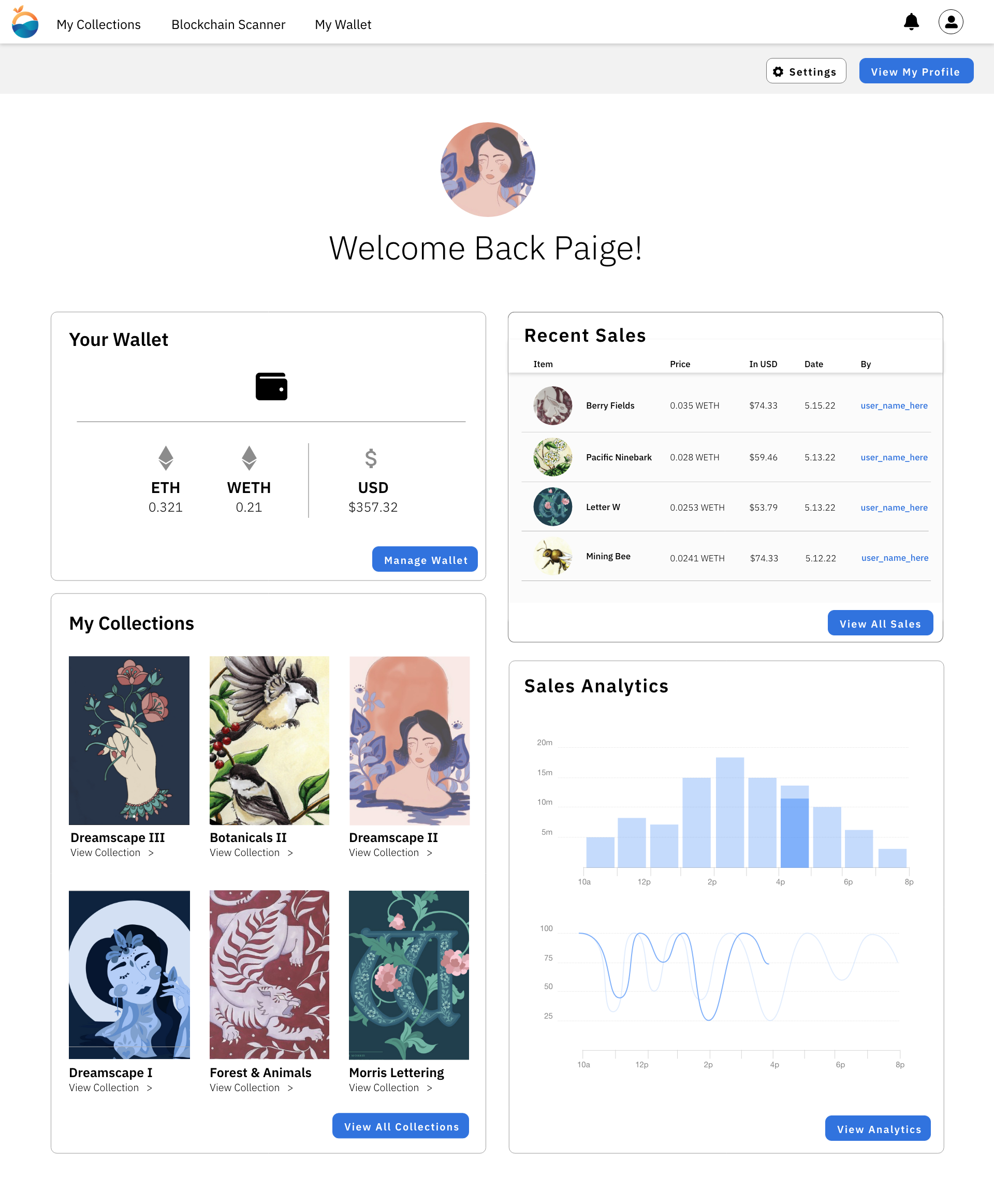
Vitamin Sea
A look at Non Fungible Tokens and their place within the art community
Non Fungible Tokens (NFTs) have seen a spike in popularity in recent years. Blockchain technology allows a piece of digital art to be given a unique identity, purchased via cryptocurrency, and owned in a way that previously proved difficult. This has revolutionized the purchasing of digital art but how are the actual creators feeling about the technology? This project explores how digital artists, cryptocurrency enthusiasts, and developers are responding to the current NFT market and if / what future they see for the technology.
The Problem
NFTs have had a moment in popular culture. Last year it was an especially big market with Beeple's "Everydays: the first 5,000 days" selling for $69.3 million at Christies auction house. There is opportunity for digital artists to move in to a new market and find success. However, as it stands, NFTs are also a flawed system that come with some risks. Because NFTs have had such a hot market it's contributed to the theft of work by small artists. That problem has actually gotten so bad that deviantart developed an Ai to scan blockchain for copyright infringement.
Digital art theft is actually an ongoing problem. Independent illustrators have always had to deal with people stealing their work. A notable example is LA based illustrator Tuesday Bassen’s legal battles with Zara.
Question & Hypothesis
If NFTs were geared towards helping artists protect their work would the art community be more interested in using them? Finding ways to leverage the NFT market and blockchain technology in favor of digital artists may help them become more accepted within the art community.
Product Goals
Vitamin Sea is an NFT marketplace geared at protecting the artists. It amalgamates some of the latest technology coming in to the digital art scene to help artists benefit from the growing NFT marketplace while also helping them maintain rights and ownership over their work. This would include Deviantarts blockchain scanner, and also integrate Adobe’s new Photoshop content authentication which allows digital artists to encode their exported photoshop files with unique data such as their adobe cloud ID. Adding these two technologies in to a marketplace allows artists to authenticate their work before it ever gets posted online, control how it is sold, and regularly check to ensure their work is not being used without their permission. The target audience is small independent artists that want an added layer of protection for their digital work.
Methodology
-
1. Create Initial Prototype
Create an initial prototype of an NFT marketplace. This prototype will be heavily based off of the initial hypothesis that NFTs may have value to digital artists if a few extra features were added to the marketplace that help protect their work.
-
2. Use Prototype to Conduct User Interviews
User interviews will be conducted with a small group of users that hold varying roles within the NFT marketplace. Users will be shown the prototype and it will be used as an artifact to hold a larger conversation around NFTs.
-
3. Document Insights
After user interviews are conducted, any knowledge gained will be documented. This can be used to drive what the MVP for an NFT marketplace for digital artists would look like, and what areas the NFT technology could eventually grow in to.
Mockup

Home Page

Seller Dashboard

NFT Collection

NFT information Page
Final Study Report









